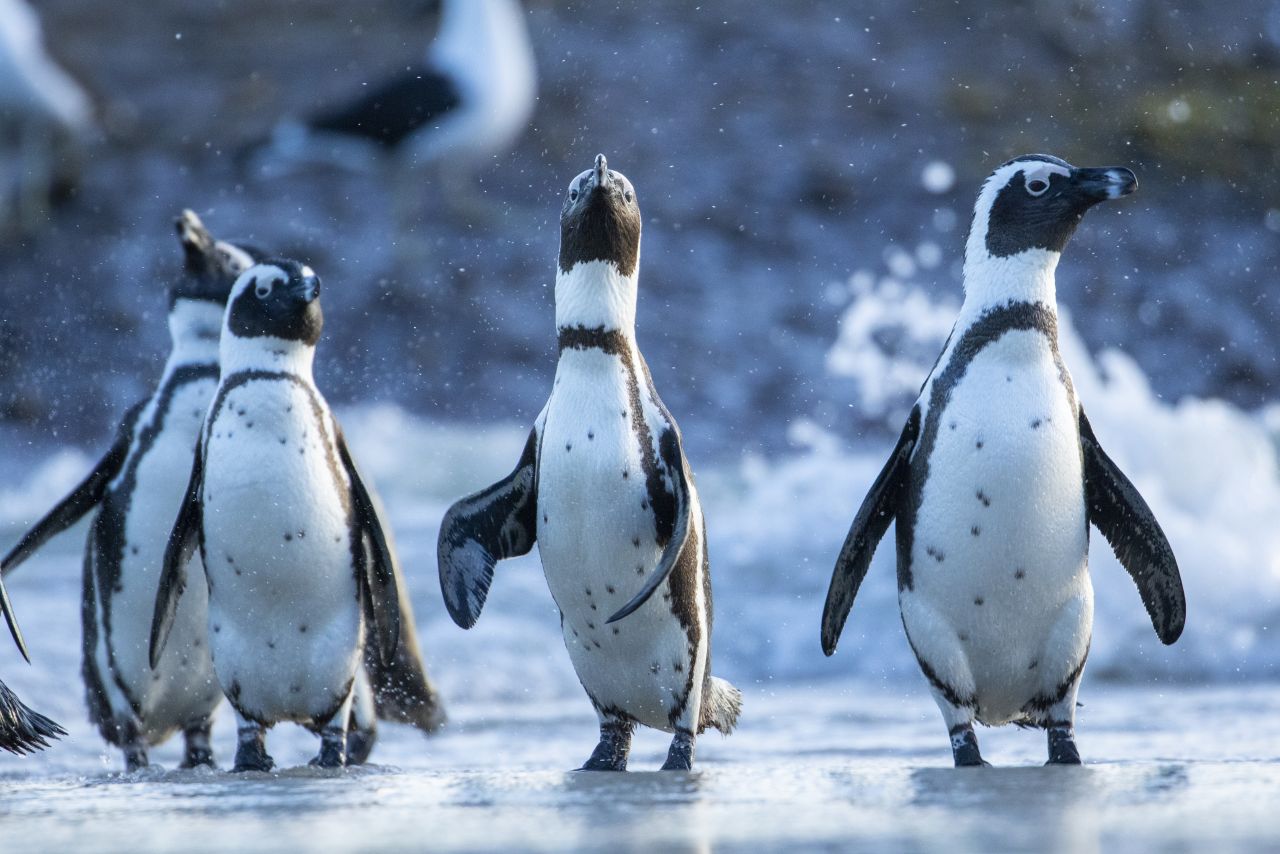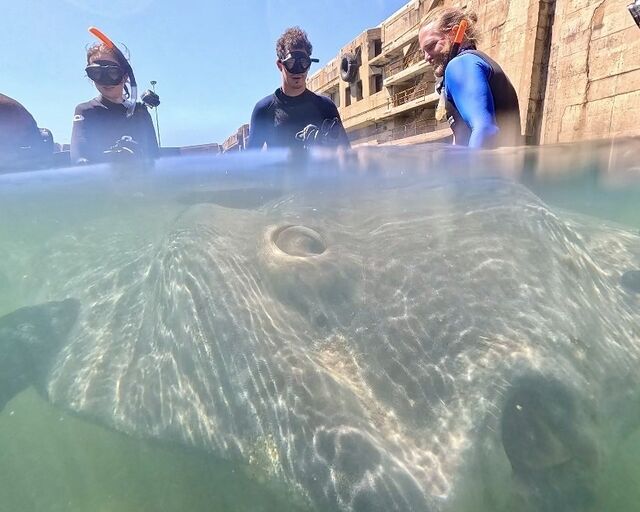Why do penguins waddle?

Visitors to the Two Oceans Aquarium are most likely familiar with the characteristic (and adorable) waddle of the penguins. This clumsy, wiggling, side-to-side gait is one of their most endearing qualities. But have you ever wondered why they waddle?
First, let’s look at the way penguins are built.
Penguins have had an interesting evolutionary pattern. The extinction event that wiped out most of the dinosaurs opened a niche in the ocean for the survivors: birds. This resulted in certain birds becoming flightless and evolving numerous adaptations for swimming, such as thicker skeletons, shorter and flatter wing bones, and streamlined flippers. Their breastbones became huge to anchor the muscles required for flapping underwater, while their ankles became much shorter and more compact.
Interestingly, because of these adaptations, penguins’ knees evolved to sit within the body cavity. Picture yourself wearing an oversized shirt that is pulled over your knees with only your ankles and feet showing – you’d have to waddle to move, too! However, the positioning of their legs gives penguins a streamlined, torpedo-like shape – a huge advantage when swimming underwater at high speeds.
Ultimately, these birds started walking upright and so, the waddle was born!
So, why waddle?
The waddle, while cute, certainly doesn’t look like an efficient way to move around. Surprisingly though, waddling is the smartest and most energy-saving method of walking for penguins.
Interestingly, if penguins didn’t waddle, they would be inefficient walkers on land. Due to their physiology, penguins must take smaller, faster steps than other birds of similar weight, meaning that their muscles work much harder. Therefore, their swaying stride compensates for their shorter legs, “balancing” out their efficiency with their inefficiency!
When penguins walk, the top of their body acts as a pendulum, rocking side to side. As the penguin sways, it stores the kinetic (movement) energy of its swing as potential energy, which it uses to power its next step. We humans, on the other hand, need to lift our whole bodies each time we take a step. The penguin’s swaying strides allow them to recover as much as 80% of the energy that they expend on each stride, making them a whopping 20% more efficient than humans!
This is why penguins still have the energy to migrate and hunt even after long periods of fasting, as their waddle is the most efficient way to walk.
Can I waddle?
The time to show off your waddle is approaching…
On 14 October 2023, International African Penguin Awareness Day, the #NOOW African Penguin campaign is orchestrating several Worldwide Waddles. The African penguin is nearing extinction, and the #NOOW campaign needs your help!
In support of the African penguin, #NOOW is calling on nature-loving children, adults, sports clubs, businesses, conservation groups, communities, radio stations, television outlets, newspapers, suburbs, towns, villages, and cities, both inland and in coastal areas around the world, to join or arrange waddles and post their support to social media. Waddles are happening all around the world, from Cape Town and Durban to Tampa and Atlanta in the USA!
If you want to help the African penguin, join a waddle!
Related News
Sign up to our Newsletter
Receive monthly news, online courses and conservation programmes.




